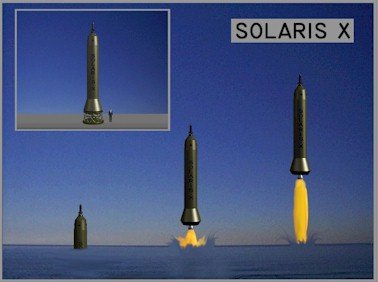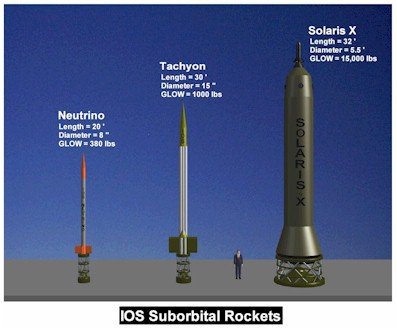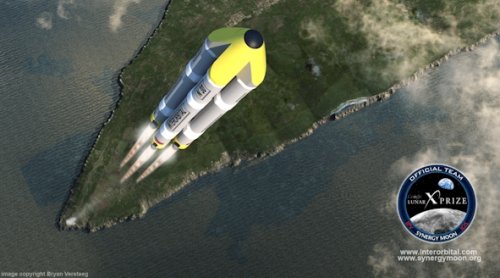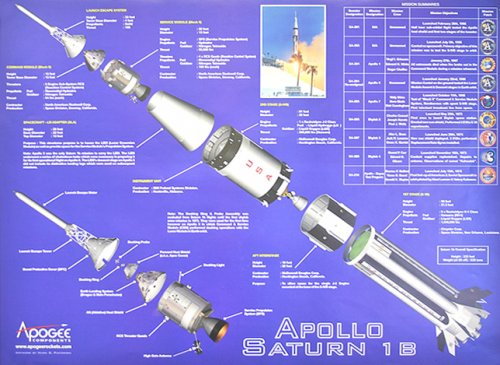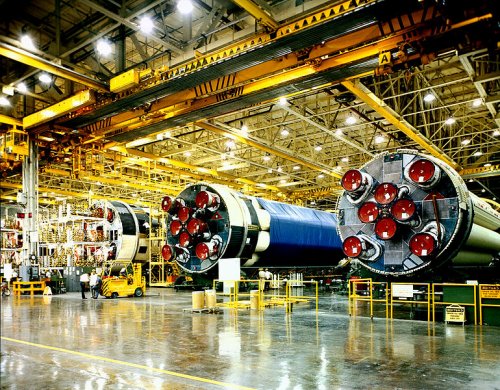FutureSpaceTourist
ACCESS: Top Secret
- Joined
- 10 March 2010
- Messages
- 590
- Reaction score
- 34
Interorbital Systems (IOS), http://www.interorbital.com/, was founded in 1996 and was an Ansari X-prize entrant and current Google lunar X-prize competitor.
Their Ansari X-prize vehicle was the Solaris X. Little detailed info is available, the attached team info PDF (from the original X-prize site at http://space.xprize.org/ansari-x-prize/interorbital-systems) says 'proprietary' for most of the entries!
Following information is taken from the IOS website a few years ago:
Another (old) suboribtal rocket page from the website also described two smaller sounding rockets the Neutrino and Tachyon, described as follows:
Their Ansari X-prize vehicle was the Solaris X. Little detailed info is available, the attached team info PDF (from the original X-prize site at http://space.xprize.org/ansari-x-prize/interorbital-systems) says 'proprietary' for most of the entries!
Following information is taken from the IOS website a few years ago:
The Solaris X rocket is designed for both orbital and suborbital tourism applications. It has been in development since 1997 as the second stage of our manned orbital rocket, the Neptune-Solaris. As a single stage stand-alone launcher, it will be initially flown in the X Prize competition.
The amphibious liquid propelled Solaris X is launched vertically from land or sea. It is a completely portable launch system with a four-person capacity and is capable of sub-orbital flights to 90 miles (152 km). The crew is contained in a reentry capsule equipped with an emergency escape system. The capsule separates at apogee and the capsule and rocket reenter the atmosphere separately. Capsule and rocket recovery take place at sea. The same recovery technology will be used later for our orbital launch system. Flight duration is expected to be 16-minutes. With its rapid turn-around time, the Solaris X rocket will be ready for a repeat launch within seven days.
Another (old) suboribtal rocket page from the website also described two smaller sounding rockets the Neutrino and Tachyon, described as follows:
Tachyon (RSX-2) Suborbital Rocket
The reusable, amphibious, RSX-2 Rocket can be launched from a land-based spaceport or from a free- floating launch unit at sea. Sea-launch operations will take place off the Southern California coast. IOS has a launch license from the US Office of Commercial Space Transportation to carry out launch operations in this region. Land based launches will take place from the Kingdom of Tonga in the South Pacific. The 30-foot long RSX-2 uses storable propellants. It is capable of lifting a 5-pound payload to an altitude of 125 miles (202-km). It has internal guidance.
Tachyon (RSX-2) Technology
Presently, there is a large demand for suborbital rockets and an even greater demand for liquid-fueled suborbital rockets because of their low acceleration rates and non-corrosive exhaust products. Currently, Interorbital Systems is the only US company offering storable-propellant, liquid-fueled suborbital rockets. RSX-2 Rockets can be manufactured and launched at a relatively low cost because the rockets utilize the following:
» Pressure-fed rocket engines—pressurized gas feeds the propellants into the engines
» Low-cost, off-the-shelf hardware, such as valves, microprocessors, and gyroscopes are used where possible
» High-technology hardware, such as guidance units, rocket engines, and recovery equipment, are designed and built in-house
» Low-cost facilities
» Surf-launch
The Tachyon is part of the Solaris X development program, primarily for inertial guidance system testing.
Neutrino Suborbital Rocket
The Neutrino suborbital rocket is a single-stage, hypergolic (auto-ignition) liquid propellant research rocket. The 20-foot long spin stabilized rocket is designed to carry a 5-pound payload to an altitude of 65 miles (105 km). It can be custom configured for various payload weights and sizes. It is also part of the Solaris X development program.

